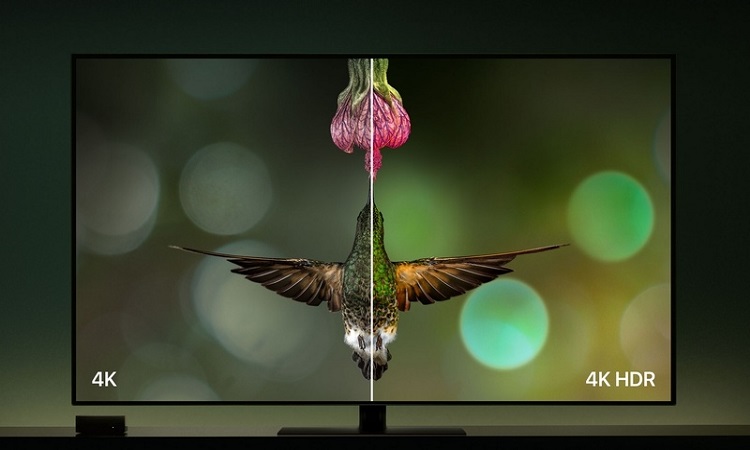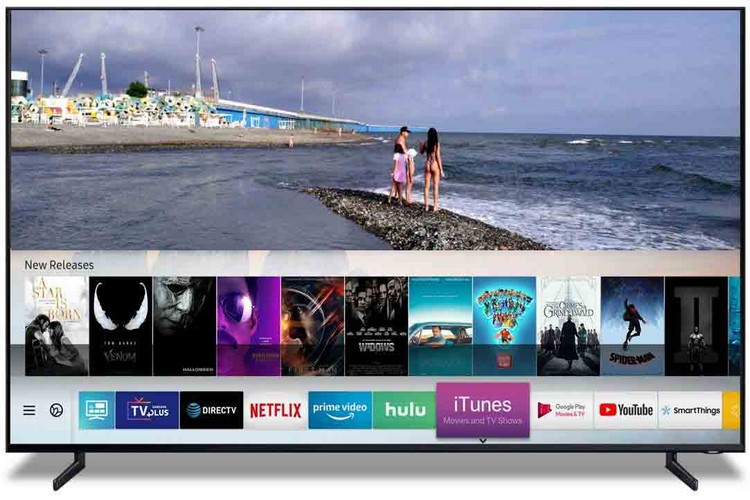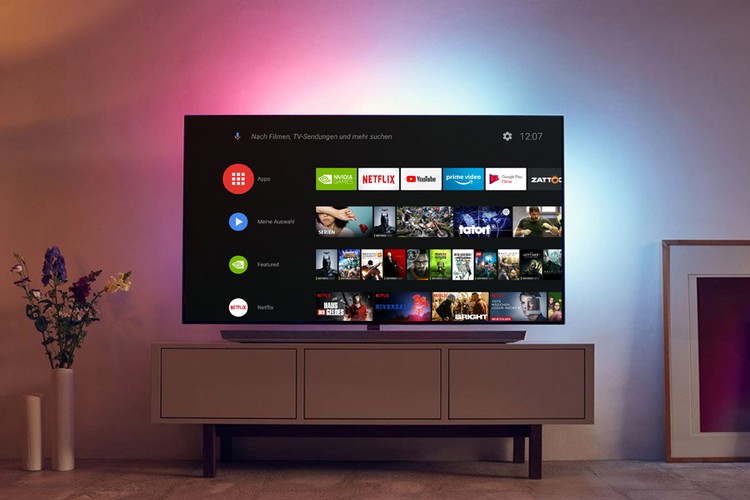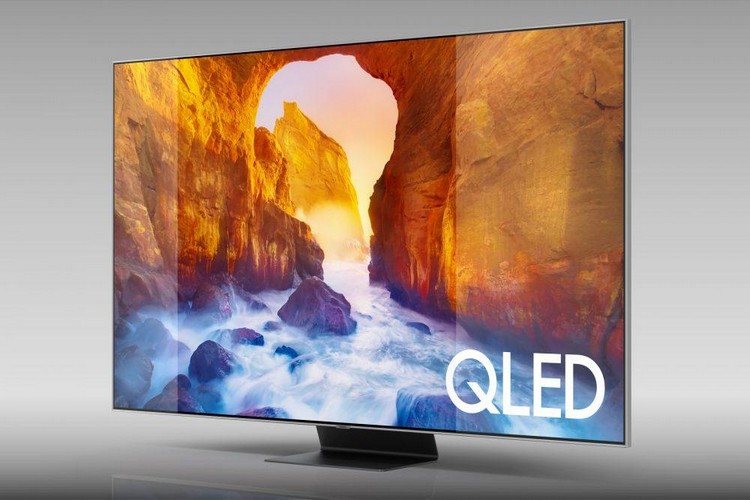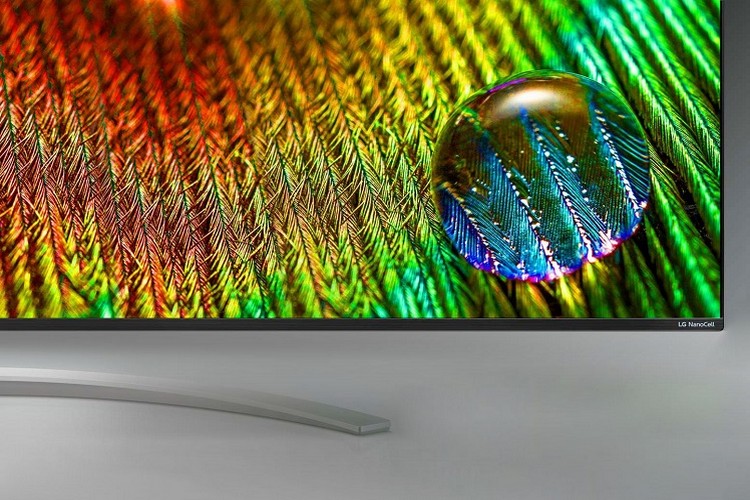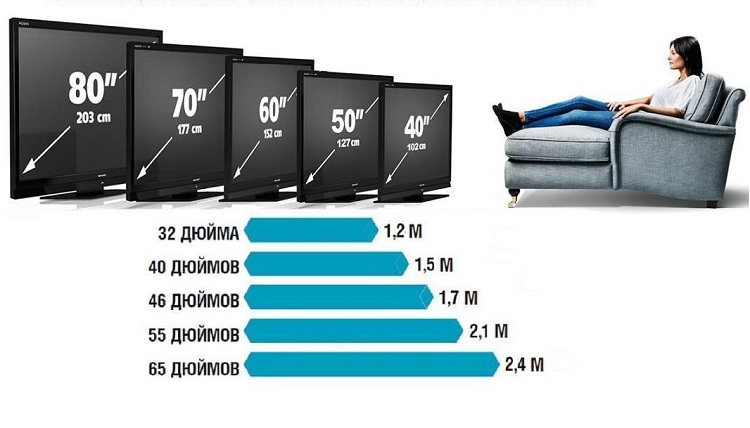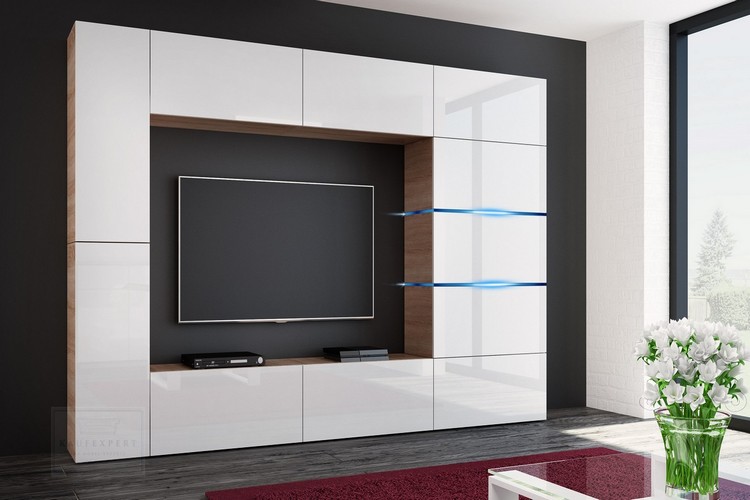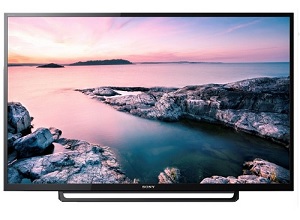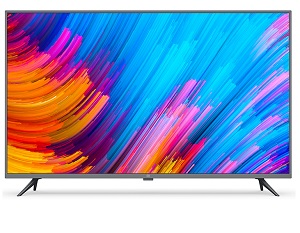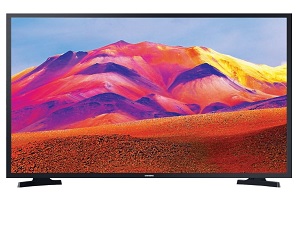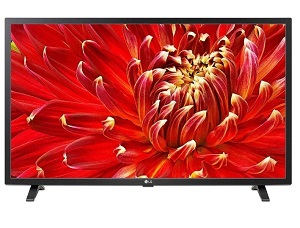How to choose a TV for the house: basic characteristics and tips for choosing a quality model
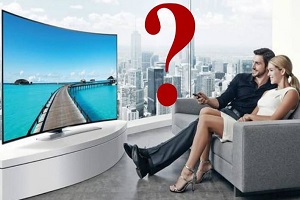 TV set has become an inseparable part of our life. But it is not difficult to get lost in the wide range of producers and models, running the risk of spending money on a device of poor quality, unable to produce a good image.
TV set has become an inseparable part of our life. But it is not difficult to get lost in the wide range of producers and models, running the risk of spending money on a device of poor quality, unable to produce a good image.
We have compiled a small guide, where we tried to take into account all the main parameters that you need to consider when buying a functional and high-quality device. And we have compiled a small rating of the best for 2021-2022 in the "Value for money" category.
Contents
How to choose a TV by function
Smart TV
It is provided by connecting the device to the Internet, through a cable or Wi-Fi module.
All work is supported by its own operating system, providing access to all available applications and services.
This function turns the TV into a functional multimedia device. Now the user does not depend on the TV program and can independently choose the content to watch.
HDR .
An important option for TVs with a small resolution. By adjusting the contrast it is possible to improve the quality of the picture, the image becomes more realistic, and all the flaws are smoothed.
All adjustments are made automatically in the course of the broadcast. The so-called lagging areas are highlighted, and the result is that the entire picture is completely natural and deep.
TimeShift
A handy feature that users who often watch TV shows or follow the broadcasting schedule will appreciate.
You can pause the broadcast at the necessary moment and then resume watching at a convenient time.
With background recording, you can play and rewind the broadcast an unlimited number of times.
Voice Control
To implement this feature requires a special remote control with a microphone. Automated commands are often used: users speak a word or phrase to make the system open an application, stop or play the broadcast.
The principle is simple: the button with a microphone is pressed, the desired command is spoken and confirmed by pressing OK. All other actions the system performs automatically.
Necessary ports
The most popular are the following ports:
- HDMI, required for connecting set-top boxes, game consoles, keyboards, and other external devices. It is desirable to have at least two - version 2.0 and 2.1.
- USB. Preferably, at least two 3.0 ports.
Which operating system should you choose for your TV?
There is currently no single standard for Smart TV. Leaders in the production of such equipment offer their own solutions, each of which has a number of both advantages and disadvantages.
What to choose from?
Tizen .
Samsung's own development, which is used in televisions from this manufacturer, as well as in some other devices, such as smart watches.
The control principle here is simple and ascetic, the user switches to Smart TV and enters a menu consisting of a tile with applications.
The older models support multitasking, allowing several windows to be opened on the screen. It is worth noting at once that browsers within this system do not shine, and it is not very convenient to control the search with the remote control. But you can connect all Samsung smartphones, and for other gadgets will have to download a special application.
WebOS
On its principle, it is largely similar to Tizen (or vice versa) and can be found in LG brand TVs. A set of services is about the same, with few exceptions.
There is voice control, and the latest models are equipped with remotes with a gyroscope, which greatly simplifies the search process.
To connect mobile devices, Wi-Fi Direct is used. All popular Russian and international streaming services are available in the app store.
The range of applications is similar to the main competitor, but inferior in variety to the next option in our article.
Android TV
Unlike previous systems, here the developers have made it so that the called Smart TV closed with its menu the content currently playing, unfolding a separate page in full screen.
The choice of applications is large, here you can find many major foreign and domestic platforms, as well as applications for personal libraries and lists.
Yes, the interface is cumbersome, but for the experienced user there is no problem. It is convenient that the developers of programs for Android do not have to rewrite them, enough adaptation for the TV screen.
There are many settings that will adjust the platform to the user's request. Android TV interacts with smartphones on a similar operating system without any problems. And "apple" gadgets are connected using the manufacturer's proprietary application or via AirPlay.
So what should you choose?
Experts do not give unambiguous recommendations, advising to choose based on personal preferences.
What kind of matrix to choose a TV?
The user who is trying to choose a new TV according to the type of matrix used by the manufacturer, it is necessary to know about their main minuses and pluses.
OLED
In this case, each pixel of the display is made as a separate light source. Due to the large pixel size, high image resolution is provided, the pixel density becomes higher, and due to this, the quality of the picture also increases.
The main advantages of such a matrix include:
- A saturated black shade;
- correct color reproduction;
- high sharpness performance;
- energy saving;
- flat screens.
Of the disadvantages, it should be noted that the service life of such models is short because of pixel burnout. Also OLED displays have high cost and less brightness of the picture in comparison with competitors.
QLED
QLED TVs have a layer of quantum dots, which allows them to transmit a wider color palette.
However this technology is mainly used only on the screens with big diagonal, which requires a significant increase in the purchase budget.
LED
LED technology (light emitting diode) appeared on the market earlier than QLED and OLED. These televisions use an LED backlight to illuminate the LCD panel.
Many LED TVs have a VA matrix, which guarantees high contrast, but a small viewing angle. They can also be very bright, sometimes even too bright. However, this disadvantage can be corrected by adjusting the settings.
LCD
These models are based on IPS technology, which is most common among smartphone and laptop screens.
The main feature is a rich color gamut with a naturalistic transfer of even minor shades, as well as wide viewing angles.
Not to forget the stable power consumption, which indicates the absence of pixel burn-in. This has a favorable effect on both lifetime and cost, making such TVs more affordable.
Crystal UHD
Crystal UHD are televisions with conventional screen matrices made using standard technology without the use of quantum-dot materials.
The term is used by Samsung, or rather, it is a marketing name for the models that previously, until 2020, had the prefix Premium TV in their name.
This technology is used in budget models, has an eight-bit color depth, and the transfer of tones is done by quickly turning on and off the light.
Nanocell .
This is a patented system that belongs to LG and is currently only used in their products. It is essentially a transitional variant from IPS, the difference is in the way the backlighting is arranged.
If the IPS has it on the edges of the screen, the Nanocell has it mounted directly under the LEDs.
The pluses are:
- low cost;
- a wide choice of diagonals;
- high rates of maximum brightness;
- The quality of color rendering, lack of dull colors;
- deep blacks and wide viewing angles;
- no risk of pixel burn-in;
- supports the display of HDR content and its modifications;
- works with artificial intelligence, which allows you to achieve high detail;
- a large selection of automatic picture modes.
Main disadvantages:
- Contrast is significantly inferior to OLED, QLED;
- The use of outdated matrices, replacement is required, which can affect the further growth of prices.
What diagonal of the TV to choose
When choosing a screen size you should consider the distance between the screen and the place where you will be watching a movie or show. Measure the distance and divide the resulting figure by 7.5 to see which diagonal is right for you.
Examples:
- The distance from the kitchen table to the TV is 150 centimeters. Divide by 7.5 and realize that the minimum recommended screen size would be 20 inches.
- In the living room, the distance from the TV to the sofa is 350 centimeters. Divided by 7.5, it is clear that you will be satisfied with 46-inch models (plus or minus five inches).
- If the distance from the bed to the device is 300 centimeters you need to choose a TV with a screen diagonal of 40 inches (you can do it a little bigger).
What kind of screen coating is better
Glossy
Glossy displays will please the user with more brightness, the image is more saturated, with good contrast. With equal conditions, if you compare the glossy coating with the others, here are better displays of color, black is deep, there are no unnecessary highlights. This makes the picture more beautiful and natural.
Also here are wider viewing angles, which is an important parameter if you do not have a clearly organized space for watching TV or a large number of people regularly gather in front of the screen.
However, we could not do without the disadvantages here as well. Experts call the main disadvantage of the glossy coating a high degree of reflection. The screen strongly reflects any light sources and thus becomes almost a mirror.
Frosted
The peculiarity of matt screens is that they have an antireflex coating that can quench glare. This is the best option for a room with bright artificial or natural light.
Yes, the colors here look duller, faded. Because of this the image may be of worse quality compared to the same picture on the glossy.
Anti-glare .
This type of coating is a derivative of matte and is most often used for computer screens, but can also be found on televisions.
In terms of image quality, everything remains the same as in the previous variant. Because of the polarizer, the reflection of light is reduced to a minimum. But the light from the liquid crystal screen has to pass through an additional layer of coating, and as a result, the matte TV screen scatters most of the light, which negatively affects the brightness of the shade.
So what to choose?
The choice between different types of coating depends on the specifics of your room.
If the TV will stand in a room with large windows or very bright lights, a matte or anti-glare option will be the best choice.
And for those rooms where the TV will be turned on with the light off or soft diffused lighting - you can safely install a model with a glossy screen.
What brand to choose a TV?
In order not to be disappointed in your purchase and get a functional and modern device that can last for years, it is important to choose a TV from a range of popular and trusted manufacturers.
In 2021-2022, these include companies:
- Samsung;
- LG;
- Xiaomi;
- Sony;
- Phillips.
Top 5 best TVs by price/quality for 2021-2022
Quantum Dot Samsung UE43AU9010U 43?
Large LCD TV with an original design that will fit into the interior of any modern apartment. Installed on a stand (is included) or hung on the wall with a special bracket.
The screen diagonal is estimated at 43 inches, the model supports 4K resolution, while the response time reaches 8 ms, and the refresh rate and the index of dynamic scenes are 60 Hz and 2800, respectively.
The TV will please you with good sound quality from two speakers with total capacity of 20 W and a wide (178 degrees) viewing angle.
In the assembly of the device manufacturer uses IPS panel, which has a wide color gamut. Direct LED backlighting is responsible for the quality transfer of colors, without distortion of white or black.
There is a smart TV platform, cable and wireless connection to the network, a full set of interfaces for connecting speakers, removable media and other equipment.
Key features:
- Screen size and resolution - 43 inches, 3840?2160.
- Backlight/matrix types - Direct LED/IPS.
- Viewing angle - 178 degrees.
- Response time/frequency is 8ms/60Hz.
- Sound power/number of speakers - 20W/2.
- Smart TV" platform - Tizen.
- Voice control - yes.
- The weight of the device with the stand is 9 kg.
Pros:
- high-quality picture, clear, juicy, without distortion;
- surround sound with a decent volume level;
- Convenient operation, including voice control;
- a rich set of interfaces;
- understandable Smart TV platform.
Cons:
- Black branding around the screen, despite the white housing.
Sony KDL-40RE353 40?
Model of LCD TV, which was introduced by the manufacturer back in 2017, but still enjoys great popularity among buyers. Sold with a stand, it has a screen surrounded by thin bezels, the diagonal reaches 40 inches.
It supports Full HD resolution and has wide viewing angles, allowing you to enjoy quality images from anywhere in the room. Thanks to the IPS matrix the user has access to a special Live Colour mode, which displays natural colors and shades as realistically as possible.
This is a classic model without Smart TV, there is support for analogue and digital broadcasting. You can also enjoy content using a slot for a flash drive or hard drive.
The sound is represented by two speakers, but its total power is twice less than in the previous model. There is an output for headphones, you can connect a set-top box, computer or audio system.
The main features are:
- The screen size and resolution is 40 inches/1920?1080.
- Backlight/matrix types - Direct LED/IPS.
- Viewing angle - 178 degrees.
- Response time/frequency - 8ms/60Hz.
- Sound power/number of speakers - 10W/2.
- No Smart TV platform.
- No voice control.
- Weight of the device - with the stand 6.9 kg.
Pros:
- value for money;
- thin frame;
- good signal transmission;
- Good image quality with naturalistic color reproduction.
Cons:
- USB is only one;
- no Bluetooth.
Xiaomi Mi TV 4S 50 T2 49.5?
Functional TV in a steel-colored design, with ultra-thin bezels and a large screen with a diagonal of almost 50 inches.
It supports 4K resolution (3840?2160 dots), has Direct LED backlighting and IPS matrix. The response time is estimated at 9 ms, the refresh rate is 60 Hz.
Mi TV is equipped with three HDMI ports, two USB ports and Ethernet port for wired Internet. All connectors are installed on the side making the connection process easy.
In the package the user will find a standard remote control with 11 buttons and voice control function. The sound is volumetric, output through two speakers with a total power of 20 watts.
The model is equipped with the Smart TV platform, which is controlled by the Android operating system, with a large number of applications and online movie theaters. Wireless communication is presented in the form of Wi-Fi and Bluetooth modules, the connection to devices is stable, without constant signal interruptions.
The main characteristics:
- The screen size and resolution is 49.5 inches/3840?2160.
- Backlight/matrix types - Direct LED/IPS.
- Viewing angle - 178 degrees.
- Response time/frequency - 9ms/60Hz.
- Sound power/number of speakers - 20W/2.
- Smart TV" platform - Android TV.
- Voice control - is available.
- Weight of the device - 10.66 kg with the stand.
Pros:
- modern design and two ways of placement;
- quality sound and picture;
- ports on the side, a good set of interfaces;
- there is control by voice commands;
- friendly system.
Cons:
- The remote control is minimalistic, you need to get used to the peculiarities of control.
Samsung UE32T5300AU 32? (2020)
Classic model in a black housing design, with a screen diagonal of 32 inches, the light sensor and supports Full HD resolution.
Can be placed on the wall or installed on a stand, consisting of two parts with supporting elements on the edges. It has wide viewing angles, good dynamic scene index and surround sound with 2 speakers with a combined power of 10 watts.
This model refers to devices with the ability to connect to the network, via cable or wireless connection. This allows you to access Smart TV.
The Tizen system gives a lot of advantages to the user, allowing the device to work faster, without wasting a lot of time processing processes and allowing to enjoy a variety of content from a large number of online platforms (cinemas, video hostings).
The USB port allows you to connect mobile equipment and storage devices, and HDMI - video equipment, there is a jack for headphones and audio system.
Main features:
- Screen size and resolution - 32 inches/1920?1080.
- Backlight/matrix types - Direct LED/IPS.
- Viewing angle - 178 degrees.
- Response time/frequency is 9ms/50Hz.
- Audio power/speaker count - 10W/2.
- Smart TV" platform - Tizen.
- No voice control.
- Weight of the device - 4.1 kg with the stand.
Pros:
- classic model;
- A high-quality picture, clear, bright and juicy;
- sensitive antenna;
- Stable connection over the network.
Cons:
- No control buttons on the body;
- Spontaneously connect to all active devices.
LG 32LM6350 32?
And to conclude the 2021-2022 rating of the best TVs in the "value for money" category, we should mention this model from LG, equipped with a screen diagonal of 32 inches.
It supports high resolution Full HD and has a wide viewing angle, which protects you from picture distortion if you watch TV without sitting directly in front of it.
The matrix has a wide color gamut, the colors are transmitted as realistically as possible, despite the low screen frequency, in dynamic scenes, the stratification of frames is not observed.
The package includes a universal multi-brand remote and a convenient stand for installation. There is a light sensor, child protection, a wide range of interfaces for connecting various equipment.
The device is connected to the network via cable or Wi-Fi module. There is a Smart TV system, presented by the webOS platform. There is also voice control, as well as the possibility of integration with the LG Smart ThinQ smart home ecosystem.
Key features:
- The screen size and resolution is 32 inches/1920?1080.
- Backlight/matrix types - Direct LED/IPS.
- Viewing angle - 178 degrees.
- Response time/frequency - 8ms/50Hz.
- Sound power/number of speakers - 10W/2.
- Smart TV platform - webOS.
- Voice control - yes.
- The weight of the device is 4,7 kg with the stand.
Advantages:
- sound and picture quality;
- stability of the connection;
- fast and convenient remote control;
- can be used for the hotel;
- color rendering;
- voice search.
Cons:
- Matrix lacks brightness;
- low OS speed.
A brief checklist for choosing a TV
So, in order to choose a quality model of a new TV, you need to:
- determine the place of installation;
- set a budget;
- calculate the necessary size of the diagonal;
- study the lighting in the room to choose the screen coverage;
- choose a basic set of necessary functions;
- ensure the quality of color reproduction and optimal brightness and contrast.
Useful Video
Plenty of tips on how to choose a TV are given in the video:



